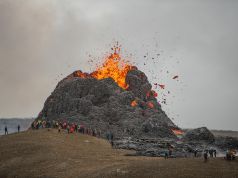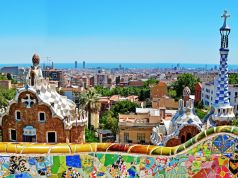Parks transformed into slopes: in Oslo skiing comes to the city
To reduce crowds in out-of-town ski resorts, hundreds of cubic meters of snow have been dumped in the Norwegian capital's green areas for sledding, cross-country skiing or snowboarding.
Norway is one of the homelands of skiing but this year, due to the pandemic, its inhabitants will not be able to enjoy themselves on the mountains. To bolster the morale of the citizens of Oslo, already tried by the virus and forced to remain near their homes, authorities have decided to bring snow to the city by creating tracks that cross the parks of the capital.
In recent weeks, Nice Matin reported, hundreds of cubic meters of snow have been dumped in the "sadly" green spaces of the city to recreate the magic of high mountains in winter.
Thanks to blocks of snow, Oslo has been transformed into a playground for winter sports enthusiasts- cross-country skiing, snowboarding, sledding- of all ages: from toddlers on a daycare field trip to workers on a break from their smart- working days.
"For three months in Oslo we have taken very strict health measures against Covid, but fortunately we can still go out," city councilor Omar Samy Gamal explained to the French newspaper right in front of the newly created snowboarding slope in Torshovdalen Park.
"Since the winter didn't bring us much snow, we made sure to bring it closer to the people by carrying some marka near their homes," he explained. By marka, what the councilman means are the wooded hills overlooking the town where residents traditionally go on weekends or after work - on foot, sledding or skis - to breathe fresh air, relax and exercise.
The fall of the first snowflakes earlier this year had sparked a stampede to the peaks and caused long lines of motorists and crowded trains. "We don't want people to pile in. We want them to stay away from each other, and the best way to be safe is to take advantage of local public spaces," said the city councillor.
Four parks in Oslo, including the Royal Palace, have therefore been or will be partially covered with artificial snow to the benefit of skiers. Psychologist Miriam Heen Skotland also agrees: "It is very important to keep people active without crowding trains and communal transport.”
Due to climate change, while a blanket of snow has covered the mountains and cities of many European cities in a way not seen in a long time, winters have shortened in Norway. According to the National Meteorological Institute, Oslo has lost 21 winter days in the past 30 years, days when the temperature drops below 0°C. And the city could lose 26 more by 2050. "When I was growing up, it wasn't hard to predict the weather in winter: it was often cold and there was a lot of snow," testified one citizen, Guri Melby, in early January during the presentation of climate measures. "But for Christmas this year, I wasn't sure if it was worth buying a sleigh for my kids because they have mild winters with a lot less snowmen and ski days.”
It's almost a sacrilege: Norway even opened its first indoor ski slope near Oslo in early 2020. Today it is closed to the public due to health restrictions.
Mindful of environmental issues, local officials were also careful not to pollute: the trucks that transported the snow were running on biodiesel with hydro- treated vegetable oils.






























